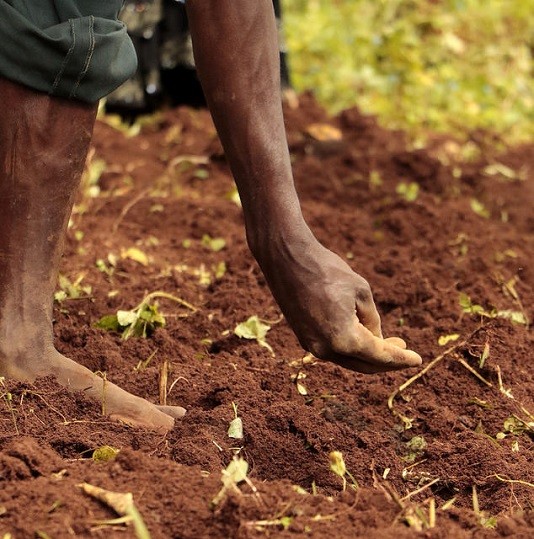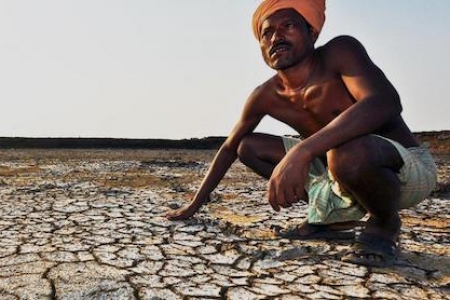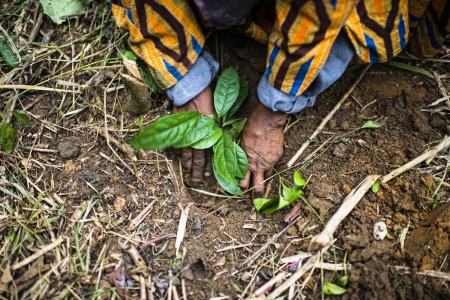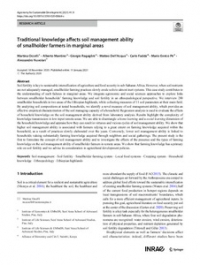Soil is back. The Cinderella of conservation is getting a makeover. Soil, and what it means for human survival, hasn’t gotten this much attention since the panic surrounding the "desertification" of Sahelian grasslands back in the 1970s and 1980s.
The stage has been set, with 2015 designated the International Year of Soils, and the Rio+20 Earth Summit calling for nations to "strive to achieve land degradation neutrality." Now comes the denouement. But as soils return to the high tables of policymaker, who will be the winners? Fertiliser companies or smallholders? Land grabbers or the hungry?

This month, the UN General Assembly will, in all probability, sign off proposals for the Sustainable Development Goals to include a commitment to "restore degraded land and soil, including land affected by desertification, drought and floods, and strive to achieve a land-degradation neutral world." And next month, at its COP in Ankara, the UN Convention to Combat Desertification (UNCCD) is likely to formally adopt the aim of land-degradation neutrality by 2030.
Meanwhile, for good or ill, the fickle focus of corporate concern, having adopted zero deforestation last year, is now turning to land degradation. The Alliance for a Green Revolution in Africa has launched a pan-African soil health programme to which the Gates Foundation has committed some $200 million.
And the World Business Council for Sustainable Development (WBCSD) calls land degradation "a critical issue for all businesses." It notes in particular soil's potential to release carbon or – no doubt with an eye to profit from offsets -- to sequester it. Rio Tinto, Unilever and Syngenta head a list of top-table corporates taking a public interest.
The stakes, all agree, are high. The UN Environment Programme says 65 per cent of Africa's land is degraded. It sees soil restoration as essential to engendering an "ecosystem-based approach to food security."
The UNCCD says soil loss is 36 times background levels, and will cost half a trillion dollars a year in lost productivity, escaping carbon and damage to ecosystems. The WBCSD reckons that "across the world, around 25% of usable land is degraded... Every year, an additional 12 million hectares - the equivalent of South Africa’s arable land surface - are subject to further degradation."
Maybe so, though the data on the states of the world's soils are both dated and notoriously unreliable. They are certainly also an unreliable guide to the state of soils in any particular location.
Under the SDGs, nations will be encouraged to adopt land degradation targets. But exactly what and how degradation will be measured remains up for grabs. Soil fertility? Soil carbon? Soil biodiversity? Soil erosion? Vegetation cover? Framing the criteria will be critical to outcomes.
Making Tradeoffs
Of course, ending all soils degradation will be impossible. So the targets will be based on eliminating net land degradation. Wherever soils are being degraded, there will need to be offsets through restoration elsewhere. There are state-sponsored success stories, highlighted by the UNCCD. Iran has brought 30,000 hectares of degraded pastures back into use under its Carbon Project. Ethiopia has done the same for 180,000 hectares under its Sustainable Land Management Programme, through systems such as terracing. South Korea has successfully restored 6.4 million hectares of degraded forest lands. The UNCCD says it can cost as little as $10 to rehabilitate a hectare of farmland.
But who wins and who loses in such restoration projects? As Paul Vlek and Lulseged Tamane asked two years ago, "where do we restore land so that the social benefits are enjoyed by those that suffered [from soil degradation]? How should conflicts and trade-offs be handled?" Again, the devil will be in the detail.
At its simplest, the global push could become a bonanza for deliverers of high-input technology packages. Or for Malawi-style parastatal projects to supply chemical fertilizers. But some are calling for a more locally based approach targeted at smallholders. Models here include the Millennium Villages programme and the FIPS-Africa smallholder partnerships in east Africa.
Zero land degradation could also become an agent for land grabbing. With data from the UNCCD suggesting that 40 per cent of degraded land occurs in areas with high rates of poverty, two approaches present themselves. One is to help poor farmers to manage their soils better; but the other is to blame them for the state of those soils and confiscate that land so others can help meet the degradation targets. The winners could be smallholders, but equally they could be fertilizer companies, land grabbers or officials seeking to meet national targets.
Critics of the looming perverse social consequences of REDD could soon be turning their hands to soil politics.












